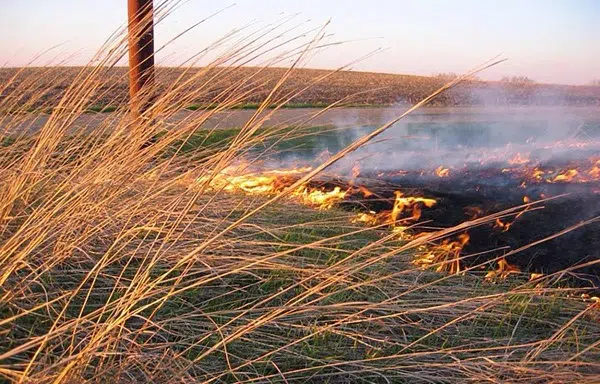Started in 2016, the Mid-Missouri River Prescribed Burn Association is a landowner-led effort to combat the spread of trees along the Missouri River corridor in Gregory, Charles Mix, Brule and Lyman counties.
Sean Kelly, SDSU Extension Range Management Field Specialist, has been working with the burn association since 2016 as a liaison officer and is vice chairman of the board. Along the river, people can already see the tree encroachment. But people are still wary of using fire to fight the issue.
“Everybody down here knows the problem. It’s just a matter of what to do to start addressing it,” Kelly said.
Kelly said one of the challenges in conducting prescribed burns, particularly along river corridors, is that it often involves a mix of public and private lands. As a member of SDSU Extension, Kelly is well-situated to bring those agencies together to hammer out jurisdictional issues.
“I want to make sure the landowner, burn association, and any state or federal organizations are all on the same page,” Kelly said.
He helped bring together the burn association, Department of Game, Fish and Parks, and United States Army Corp of Engineers to sign a memorandum of agreement for prescribed burns. That agreement has been a tremendous help, he said, and having a burn association made it easier to accomplish than with one or two individuals.
“I think that’s one of the great things about being organized into a burn association – you can solve problems like this,” Kelly said.
A native of rural Winner, Kelly also brings his longtime experience as a volunteer firefighter to the board. The association has been busy since its inception in 2016, completing prescribed burns on 688 acres in 2017, 271 acres in 2018 and 314 acres in 2020. In 2022, the association had 1,832 acres planned for burns but could only burn about 300 of them. This year, there are 6,563 acres planned for prescribed burns, plus the 1,500 carried over from last year. And there are already 10,940 acres on the books for prescribed burns in 2024.
Spring is the ideal time to burn, but it’s a short window from winter snows melting to when summer growth starts – March and April, with maybe a few weeks in February or May. By June, Kelly said the burning season is done.
In 2019, rampant flooding canceled any burns, and COVID-19 canceled most in 2020, as well. A dry, windy spring in 2022 made burning impossible. After three years of being foiled in the spring, the burn association decided to try a fall burn – and it was a success. Kelly said the success of the Mid-Missouri River association has started to persuade people in the area that prescribed burns can be done safely – and that they work.
“Our best advertisement is when we’re getting burns done, because you can see them for a long way,” Kelly said. “Everybody wants to know what’s going on.”
For a $25 membership fee, the association helps the landowner plan their prescribed burn, including providing manpower and equipment. The landowner must attend another burn prior to their own and may need to prepare fire breaks. It can easily take a year of planning — sometimes two — between the landowner, Kelly and the burn association before a landowner gets the green light.
Even once the planning is done, conditions must be right the day of the burn. Temperature, wind speed, wind direction, humidity – everything must meet specific parameters or the burn is postponed. Bonesteel-area landowner Tom Hausmann said the detail and caution that go into the planning eased his own trepidation. A successful 300-acre prescribed burn on his property cemented his commitment to fire as the best tool for the job.
“When I did my burn, I really didn’t know what was going to happen,” he said. “But we got along just fine.”
Sandy Smart, SDSU Extension Agriculture and Natural Resources Senior Program Leader, and Kelly credit the success of the Mid-Missouri River Prescribed Burn Association to the tireless efforts of the ranchers and landowners who lead the organization. They are the ones who have championed the burn association, providing the manpower and equipment that make prescribed burns possible.
Once the new SDSU Extension field specialist is in place, they can build on existing efforts and relationships with partner organizations and individual landowners. Along with burn schools and the ultimate goal of another burn association, Smart said SDSU Extension will continue working with other organizations to draw attention to the trees encroaching the grasslands. It will take everyone coming together to meet the issue, he said. And just as the spread didn’t happen overnight, neither will combating it.
“This is a long-term problem, so it requires a long-term solution,” Smart said. “The hardest part is to recognize the slow change on the landscape. We have the opportunity to protect those core areas that haven’t been invaded yet.”









Comments